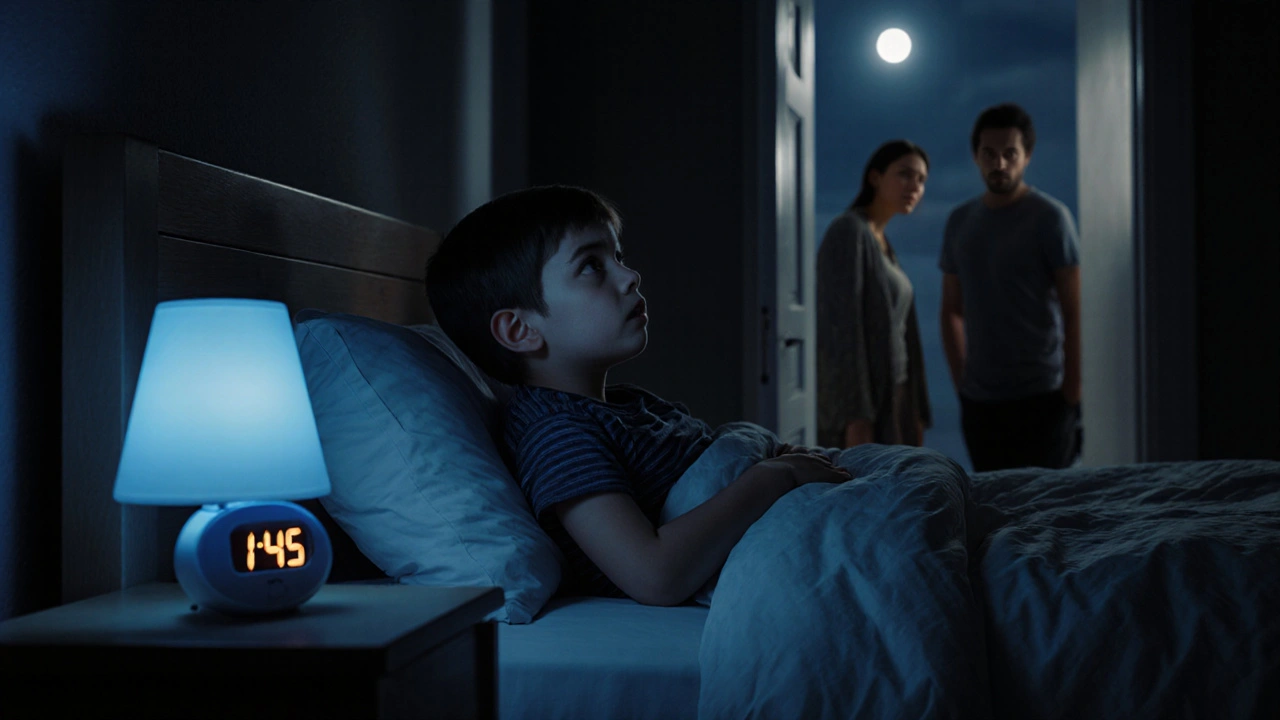Children Sleep Disorder: Causes, Symptoms, and Solutions
When dealing with children sleep disorder, a condition that disrupts normal sleep patterns in kids, making it hard to fall asleep, stay asleep, or wake up refreshed. Also known as pediatric sleep disorder, it can show up as frequent night waking, bedtime resistance, or daytime fatigue. Children sleep disorder often includes sub‑issues like insomnia and sleep‑related breathing problems, and it usually needs a mix of medical insight and home‑based strategies.
Key Types and What Triggers Them
One of the most common sub‑entities is insomnia, difficulty falling or staying asleep despite a conducive environment. Insomnia in kids is frequently linked to screen time, inconsistent bedtime routines, or anxiety about school. Another major player is sleep apnea, brief pauses in breathing during sleep that cause fragmented rest. Obesity, enlarged tonsils, or nasal congestion can spark apnea episodes, leading to snoring and daytime sleepiness. Both conditions illustrate the semantic triple: children sleep disorder encompasses insomnia and children sleep disorder includes sleep apnea. Recognizing which type you’re facing helps narrow down effective treatments.
Beyond diagnosis, several tools and methods shape how we manage these disorders. melatonin, a hormone that regulates the sleep‑wake cycle is frequently used to tweak bedtime timing, especially for kids whose internal clocks are delayed. Research shows that low‑dose melatonin can shorten sleep onset by 30‑45 minutes when paired with proper sleep hygiene. However, it’s not a magic bullet; the semantic triple melatonin supplementation influences sleep onset holds true only when parents also enforce consistent bedtime routines and limit caffeine. Speaking of routines, behavioral sleep therapy, structured techniques like stimulus control and relaxation training often yields the best long‑term results. These strategies teach children to associate the bed with sleep, not with screens or stress, fulfilling the triple effective management requires behavioral therapy. Combining melatonin, therapy, and environmental tweaks—like dark rooms, cool temperatures, and quiet, screen‑free zones—creates a comprehensive plan that targets the root causes rather than just the symptoms.
Below you’ll find a curated set of articles that dive deeper into each of these aspects. From vitamin influences on mood to safe online medication purchases, the collection equips you with practical tips, dosage guidelines, and real‑world advice you can apply tonight to improve your child’s sleep. Explore the posts to get actionable steps, expert‑backed recommendations, and answers to common questions about managing children sleep disorder effectively.

Delayed Sleep Phase Syndrome in Kids: Signs, Symptoms & Treatment Options
Learn to spot Delayed Sleep Phase Syndrome in children, recognize its symptoms, and explore effective treatments like melatonin, light therapy, and behavioral strategies.
